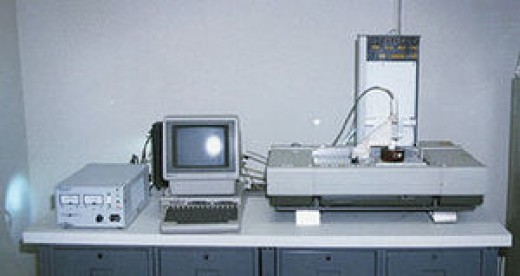Charles Hull, the Co-founder and CTO of 3d-Systems spoke to Chitra Sethi, the managing editor at ASME.org about the evolution of the editing manufacture industry and its possibility to participate within the production industry.
The PodCast took place last 12th of May 2016. It was translated with the aim to reflect how the 3dP industry is being pushed forward to a commercial use.
CH: Welcome to ASME org PodCast Series. This is Chitra Sethi managing editor of ASME.org with Charles Hull the co-founder and CTO of 3D Systems. Chuck is the inventor of the solid imaging process known as stereolithography. The first commercial 3d printing technology. With the founding of 3d systems in 1986, he initiated the 3d printing industry and continues to leader today with cutting edge innovations. Charles Hull thank you so much for joining us today.
CH: Oh you are welcome, I’m happy to be here.
Q: CS: After you invented the technology and created your first 3d printing part what changed?
A: CH: I created the first part I guess in 1983. I spent time after that sort of trying to perfect technology and get the first application in place, and then once that happened it was a question of commercialising the technology. The company I was working with, they couldn’t afford it, when I presented the business plan. And so I agreed then to spend out a new company and basically licensed the technology they had developed into this new company. So what changed was then really the formation of the first company in this field of 3d systems and that was really the beginning of the editing manufacturing industry

Q: CS: And what pushed the technology into full commercial use?
A: CH: The first major use of the technology were people in the automotive industry, engineers and manufacture people. And the problem back in that era was that the U.S. automotive industry and, to some extend the european automotive industry were following behind asian manufacturers, particularly in that time Japanese manufacturers in terms of how quickly they could produce new cars. So, they where looking for ideas and technology to help speed up the design process so 3d printing became a part of that, I would like to think a big part of that along with 3d Cad which was just emerging at that time. And of course 3d printing really depends to a larger extend on 3d Cad. So these companies along with some aerospace companies had the 3d CAD and really helped pushed forward 3d printing to a commercial use.
Q: CS: You mentioned 3d Cad. How important is CAD software to the adoption of the technology?
A: CH: Well, to a large extend it’s essential, I mean there are other types of 3d data for example digital scanning, but almost all 3d printing really depends on 3d CAD.
Q: CS: Currently there are several new technologies and there are also 3d printers which are promising speed of printing. What’s your opinion on that?
A: CH: I’m a big promoter of that. There was a user group of manufacturers and we showed a high speed printing system that was a show of a 3 high speed printers, each addressed with a robotic arm that could place the platform, pull out the parts, move the parts over to some post-finishing spaces and present them at the end to the next step of an industrial production line. That was a demonstration we are tackling to other companies about how can they use this, when can they use it, and how the idea to produce those small high speed printers and integrate them into production line. So, I think that kind of technology is going to be very important in taking editing manufacturing to production.
Q: CS: Then are severals international labs funded by the government. What do you think is their impact on editing manufacturing technology development, if any?
A: CH: Well, that is a good question. A lot of the government’s sponsorship in the last 10 years has been by sponsor’s labs in Europe. So that’s where a lot of the current metal 3d printing emerges. So they are sponsored by the labs and then the company spends out of this sponsorships and have kind of brought metal high density, high performance metal printing; 3d-Systems didn’t participate in that, we ended up then doing some acquisition of european companies and so that has brought our company into this exciting new field.
But, in the last few years there’s been more sponsorships in the U.S. and there is a prime institution that’s called -America Makes- a sponsor group in Ohio that we are participating in, so this is kind of a new twist for american government sponsorship for technology development and we are participating in those and we are expected to have a really good impact on US technology.
Q: CS: The last 5 years have witnessed the 3d Printing boom. Do you think it will continue in the next decade?
CH: Absolutely, and there is a few ways to look at that boom. People where expecting to 3d printing to instantly be everything. The good thing is that it has created a general awarenesses, a lot of people not just industrial people but the population as a whole, understands what 3d printing is. The real effort of 3d printing is thousand of engineers and designers around the world working on projects in 3d printing and thousand of companies around the world implementing the technology. This is definitely in a good curve, in that sense I feel like we kind of developed this sort of technology and it has spread to all the corners in the world now and that definitely will continue into the next decade and beyond.
CS: Thank you for answering my questions today.
CH: You are welcome. I’m really happy to talk to you.
CS: And thank you to our listeners too, for tuning in.


